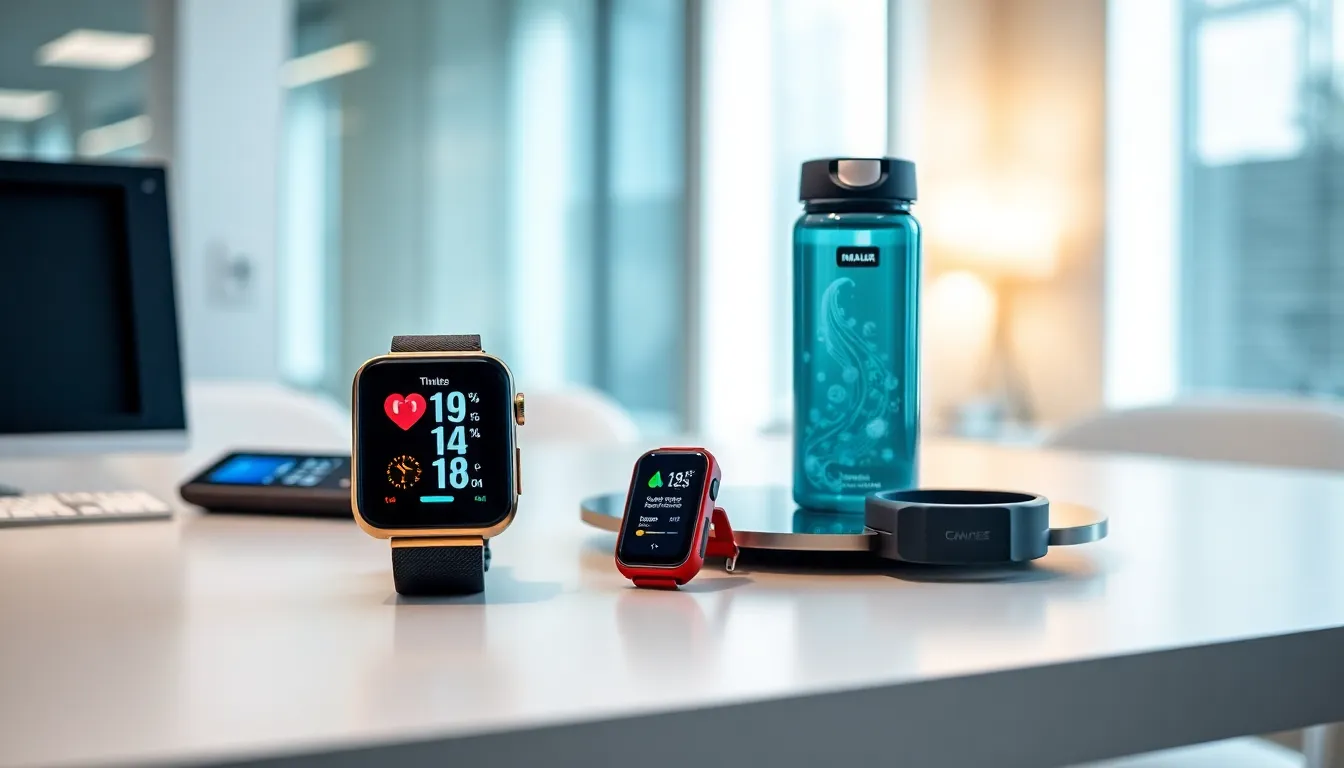In today’s fast-paced world, staying fit often feels like trying to fit a square peg into a round hole. Enter fitness gadgets, the shiny heroes of the modern workout. These little tech marvels promise to turn your sweat sessions into streamlined, data-driven adventures. Think of them as your workout sidekicks who don’t just count calories but help crush your fitness goals, all while keeping it light and fun. Ready to transform your health journey? Let’s jump into the world of fitness gadgets that are turning ordinary workouts into extraordinary experiences.
Table of Contents
ToggleThe Importance of Fitness Gadgets in Modern Health

Fitness gadgets have emerged as essential companions in today’s health-conscious society. With the increasing emphasis on wellness, people seek innovative tools to help track progress and motivate themselves. These devices assist individuals in monitoring their physical activities, diet, and overall health metrics in real time.
Fitness gadgets offer a level of personalization that traditional fitness approaches often lack. They empower users to take control of their fitness journeys through insights and data. Also, the social aspect cannot be overlooked. Many wearables allow users to connect with friends and share achievements, creating a community of support and accountability. So, whether someone is striving for a marathon or simply aiming to climb stairs without gasping for air, fitness gadgets play a crucial role in modern health.
Types of Fitness Gadgets
Fitness gadgets come in various forms, each serving specific purposes to enhance the workout experience. Here’s a look at some of the most popular types:
1. Wearable Fitness Trackers
Wearable fitness trackers have become a staple in the fitness realm. Devices like the Fitbit or Garmin not only track steps but also monitor heart rates, sleep patterns, and energy expenditure. Users can set goals, receive reminders to move, and review their performance over time.
2. Smart Scales
Gone are the days of basic weight scales. Smart scales connect with smartphones to track weight alongside metrics like body fat percentage and muscle mass. A smart scale isn’t just measuring weight: it’s giving users a comprehensive view of their body composition and progress.
3. Heart Rate Monitors
These devices are particularly valuable for those who want to optimize their workouts. Heart rate monitors help users remain within their target heart rate zones, ensuring they’re exercising effectively. Many come as standalone devices or integrated into fitness trackers, providing real-time feedback during workouts.
4. Smart Water Bottles
Staying hydrated has never been more exciting with smart water bottles that remind users to drink water and track fluid intake. Some even sync with fitness apps, helping maintain optimal hydration levels based on activity levels. Who knew drinking water could be this advanced?
Choosing the Right Fitness Gadgets for Your Goals
Selecting the right fitness gadgets can feel overwhelming with the myriad of options available. But, aligning gadgets with personal fitness goals simplifies the process significantly.
For someone focused on overall fitness, a wearable fitness tracker is an excellent starting point. It provides insights into daily activity and can motivate users to be more active. Those more interested in specific metrics, like weight loss, might find smart scales more beneficial. Meanwhile, serious athletes may prioritize heart rate monitors to fine-tune their training sessions.
Before making a purchase, it’s wise to consider compatibility with existing devices or apps. Some gadgets sync seamlessly with other tools, enriching the user experience. Also, reading reviews and seeking recommendations can guide potential buyers towards quality products. The key lies in identifying goals and finding gadgets that will assist rather than confuse.
Benefits of Using Fitness Gadgets
The integration of fitness gadgets into workouts offers several significant advantages:
1. Enhanced Tracking of Progress
Fitness gadgets provide detailed tracking of various metrics, including heart rates, step counts, and calorie burn. Such data allows users to monitor improvements and encourage continuous progress. Seeing tangible results enhances users’ commitment to their fitness regimen.
2. Motivation and Accountability
Many fitness gadgets include social features, allowing users to challenge friends or share accomplishments. This communal aspect promotes a spirit of competition which can be incredibly motivating. Besides, receiving notifications when a goal is achieved or a milestone is reached offers an immediate sense of reward.
3. Personalized Workout Plans
Some advanced fitness gadgets can analyze user data and create customized workout plans tailored to individual goals. By integrating personal metrics, such as fitness level and preferences, these devices offer a more efficient approach to fitness, allowing users to train smarter, not harder.
Challenges and Considerations When Using Fitness Gadgets
While fitness gadgets offer numerous benefits, challenges exist that users should consider. First, accuracy can vary between devices. Not all gadgets track metrics equally well, and some might miscount steps or calories. It’s essential to do thorough research on product reviews to find reliable options.
Also, there’s the issue of dependency. Some individuals may become overly reliant on gadgets to quantify their performance, inadvertently creating unnecessary pressure. Balancing tech assistance with intuitive fitness is crucial to maintaining a healthy mindset.
Privacy concerns also arise, particularly about data collection and storage. Users should be aware of how their data is being used and take necessary precautions to protect their privacy.
The Future of Fitness Gadgets
Looking ahead, the future of fitness gadgets appears promising with technology continuously evolving. Integration with artificial intelligence is likely to revolutionize how users interact with their gadgets. Imagine a device that not only tracks workout metrics but also provides real-time coaching based on performance data.
Also, advancements in augmented reality could lead to immersive fitness experiences, where workouts become interactive adventures rather than monotonous routines. Innovations in smart clothing that track biometrics during activities are also on the horizon, potentially offering users even deeper insights into their performance.
As fitness trends shift, expectations for gadgets will grow. Consumers will increasingly demand multifunctional tools that not only cater to tracking but also enhance overall wellness, blending fitness seamlessly into their daily lives.





